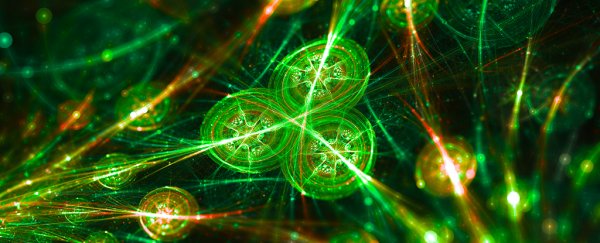Time crystals are similar to regular crystals in that they are based on structures of atoms that repeat. Rather than forming repeating across three dimensions of space, these ones change in a set pattern over time.
This strange phase of matter was first predicted by the American Nobel laureate and physicist Frank Wilczek in 2012, who proposed it might be possible for atoms to change over time even while at their lowest energy, much as a superconductor can technically carry an electrical current while in its lowest energy state.
This means they can – theoretically – repeat forever without an energy source, which makes them sound suspiciously like a perpetual motion machine. According to the laws of thermodynamics, such devices are impossible, which some think makes time crystals a 'no go' zone.
Others argue that since these repeating crystals can't be connected to anything that could use it to do useful work, they aren't technically machines, so don't break any laws.
Just how a crystal might be used, whether for keeping time or carrying out computer operations, is still being debated.
Can we make a time crystal?
Since Wilczek's prediction, a number of researchers have conducted experiments that show atoms behaving in ways that could qualify as a time crystal.
In 2016, a team of physicists from University of Maryland and another one from Harvard University in the US used a method proposed by researchers from the University of California, Berkeley, to demonstrate time crystal behaviour in action.
Each of their processes relied on setting a chain of entangled particles into periodic motion with a laser, and watching for a distinctive break in the pattern that reflects the material's distribution of energy falling out of equilibrium, just as time crystals should do.
Research conducted in 2019 suggested quantum entanglement might allow for an arrangement of particles to periodically change a property such as spin at a distance, meeting the definition of a time crystal without energy being added.
All Explainers are determined by fact checkers to be correct and relevant at the time of publishing. Text and images may be altered, removed, or added to as an editorial decision to keep information current.
